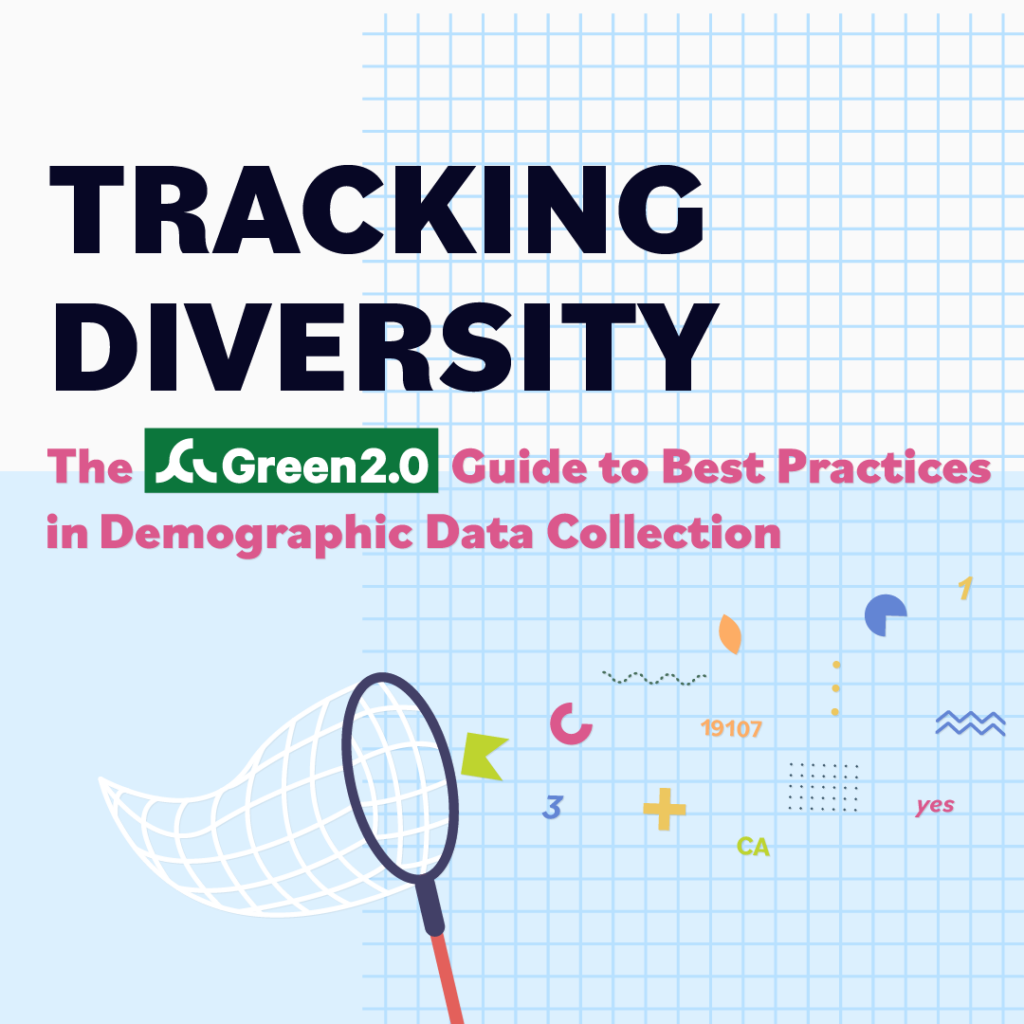BLOG / BLOG POST

Q+A on Tracking Diversity Guide
By Green 2.0
Green 2.0 Communications Manager Raviya Ismail discusses the new Tracking Diversity: The Green 2.0 Guide to Best Practices in Demographic Data Collection (Tracking Diversity Guide) with her colleague Andy Beahrs, Grants Manager.
Q: What is the Tracking Diversity guide?
If an organization wants to make strides on improving internal diversity and representation, it has to begin with a clear understanding of the baseline–that is, who makes up its staff and board, to begin with. However, we’ve heard from numerous organizations that while they’d like to be able to track and report upon the demographics of their staff, senior staff, and boards, they have a hard time knowing where to begin.
The Tracking Diversity Guide is designed to fill that gap by compiling best practices in demographic data collection. By soliciting input from a wide range of environmental NGOs and foundations in partnership with Keecha Harris and Associates (KHA), we’ve developed suggestions for gathering, analyzing, and using data. Because of the range of organizations surveyed, we hope that the result will be useful for both large and small groups, and by those wanting to hone their practices as well as by those starting out for the first time.
Q: Why did Green 2.0 decide to produce this guide?
The core of Green 2.0’s work is producing annual reports on the state of diversity on the staff and boards of environmental organizations. Green 2.0 decided to pull together this guide to make the demographic data collection process easier. Since we view clear, accurate data as being essential to creating change and measuring improvement, it’s important that collecting that data be as simple as possible. This is a tool that all organizations can use for data collection efforts and will be updated and changed as needed.
Q: How can organizations use the guide?
We hope the guide will encourage more groups to participate in our annual Transparency Report Card process. We also offer improvements for several categories of demographic questions that are still used commonly, but which are increasingly out of sync with best practices. It’s important to note that the guide is designed for broad use, such as organizations gathering data to better understand their own strengths, weaknesses, and communities served.

Q: What is the difference between the Tracking Diversity guide and the Transparency Report Card?
The Tracking Diversity Guide is a how-to for gathering internal demographic data and the first of its kind for the field that Green 2.0 is releasing. The Transparency Report Card is a compilation and analysis of demographic data from environmental NGOs and foundations that we have released since 2018. Our next Transparency Report Card will be released in the fall.
Q: What do you hope organizations and foundations will achieve from using this guide?
In addition to simplifying the data collection process, we hope the guide will allow NGOs and foundations to consider their own strengths and areas for potential improvements while providing insight into crucial questions such as the overlap between the backgrounds of staff and board on the one hand and communities served on the other. Organizations should also use the guide to help them determine if their senior leadership and decision-making roles are majority White, since including people of color in high-level positions is an integral part of the diversity and inclusion process.
Q: Is there anything else organizations and foundations need to know about this guide?
Through our work pulling together this guide, we found that the best time for organizations to collect demographic data is during the onboarding process for new hires. We also found that providing the opportunity for individuals to self-describe, or to opt-out of answering questions is critical to the process of data collection. Finally, this guide is a living document that will be updated and improved year after year. Click here to submit input and feedback.
